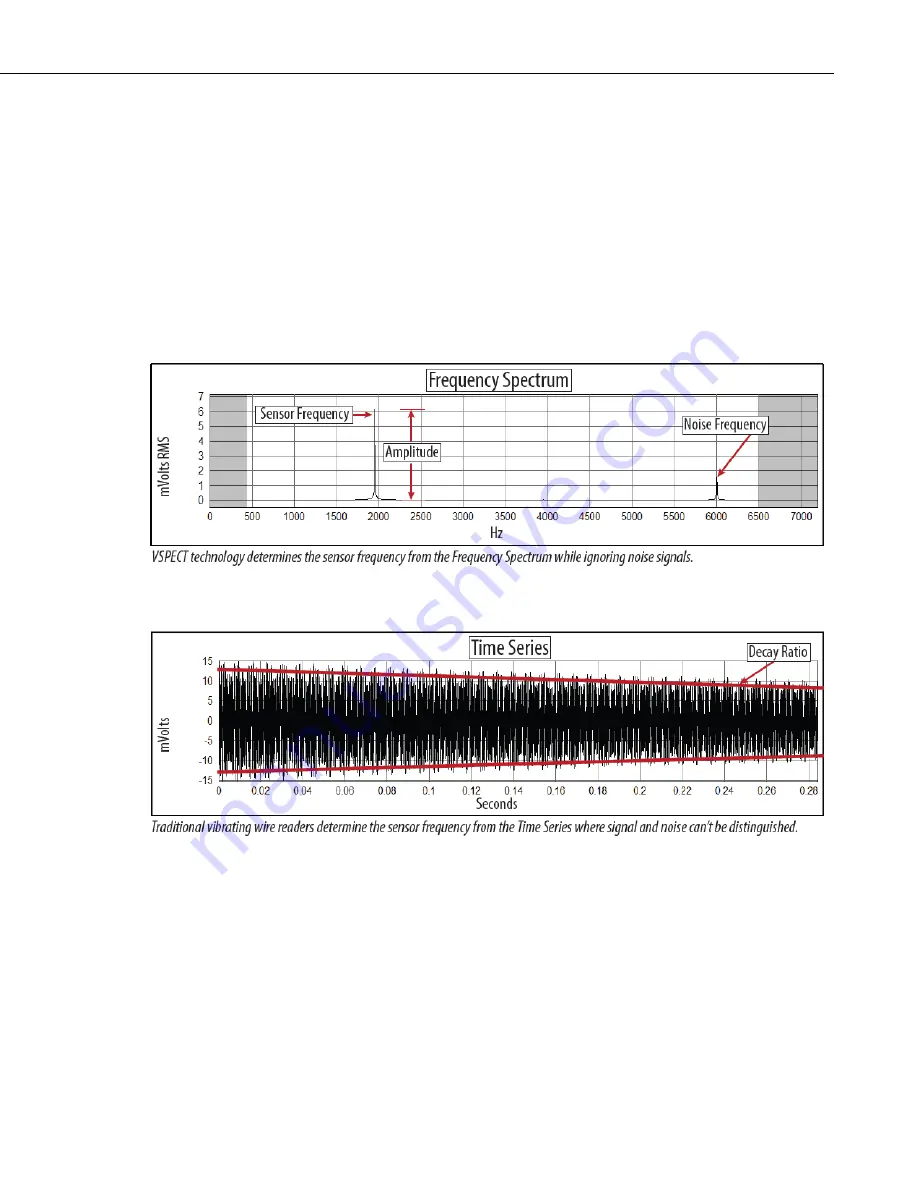
CRVW3 3-Channel Vibrating-Wire Datalogger
9
The CRVW3 excites vibrating-wire sensors with a swept excitation
(frequency-rich) waveform. The lowest frequency and highest frequency used
in that excitation are customizable by the user. This frequency range represents
all expected natural frequencies that the sensor should produce, including those
expected when it measures the most extreme conditions in the environment
(highest and lowest frequencies). By exciting the sensor in only a certain range,
interference from unwanted signals on the wire is reduced. The level of the
excitation (12 V, 5 V, 2 V) can also be controlled by the user.
The patented VSPECT™ process uses frequency-domain analysis (including
the use of Fourier transforms), interpolation, and digital signal processing
(DSP) to identify and eliminate unwanted noise from the measurement, and
produces a very high resolution frequency output.
FIGURE 5-4. Time-Series and Frequency Response of a Vibrating-
Wire Sensor
Since changes in temperature can impact the density of the vibrating-wire
element of the sensor, a slight change in frequency is expected on the sensor as
temperature changes occur. To compensate for this effect, many vibrating-wire
sensors contain a built-in thermistor or other resistive temperature device. The
resistance of the device is measured and converted to temperature. The
temperature at the time of measurement is recorded and can then be used
together with the frequency reading to calculate the value of the output
phenomenon in engineering units (i.e., measured value given with its
dimensions or units of measure).
Содержание CRVW3
Страница 2: ......
Страница 3: ......
Страница 7: ......
Страница 13: ...Table of Contents vi ...
Страница 121: ...Appendix A Updating CRVW3 Firmware A 4 ...
Страница 131: ...Appendix E Engineering Output and Calibration E 4 ...
Страница 133: ......
Страница 134: ......
















































